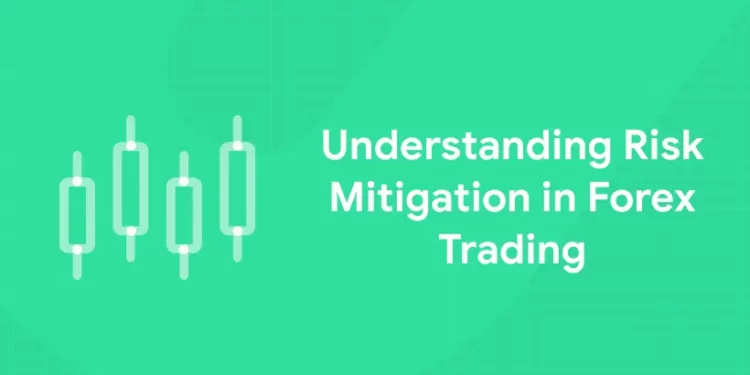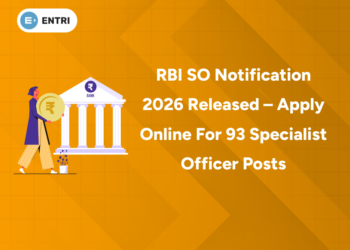Table of Contents
Trading foreign exchange, or forex, is the practice of purchasing and selling currencies on an international exchange market. Trillions of dollars are exchanged on it every day, making it one of the biggest and most liquid financial marketplaces. High earnings are possible with forex trading, but there are also a lot of risks involved. This is why understanding risk mitigation in forex trading is very important. This article will examine all of the risks associated with forex trading and go over ways to reduce them.
Understanding Risk Mitigation in Forex Trading: Introduction
In the world of foreign exchange trading, mitigation is essential to reducing the possible risks associated with participating in the foreign exchange market. Risk management becomes crucial in this market because of its extreme volatility and unpredictability.
Traders use a range of strategies to lessen the effects of market swings and protect their capital. Let’s explore the importance of risk mitigation in forex trading and look into some practical methods that traders use to lower their risk exposure.
Understanding Risk Mitigation in Forex Trading
The process of lowering the possible risks connected to trading in the foreign exchange market is known as mitigation in the context of forex trading. The goal of mitigation techniques is to reduce possible losses while enhancing a trader’s portfolio’s overall performance.
Forex traders must be well-prepared with the right tools and strategies to reduce risks and increase profits in this extremely volatile and unpredictable market. Profitable traders employ a variety of risk-mitigation techniques to lessen the impact of market swings because they recognize that risk management is a critical component of forex trading.
Learn with experienced forex trading mentors! Join Entri Forex trading online courses!
Type of Possible Risks in Forex
1: What is a stock?
Understanding Risk Mitigation in Forex Trading is very important. There are various types of risks involved when you trade in the forex market. Traders must be aware of these risks to protect their capital and make wise judgments. Some of them are listed below.
Market Risk
Market risk is one of the main risks associated with forex trading. The likelihood of losses as a result of adverse price fluctuations in the currency pairs being traded is referred to as market risk. Due to the influence of several economic, political, and social factors, currency prices are extremely erratic. Traders must comprehend that swift fluctuations in pricing may result in possible losses.
It is essential to perform in-depth study and analysis before making a deal to reduce market risk. Technical and fundamental analysis are useful tools for traders to use when determining possible entry and exit locations. Stop-loss orders, which automatically close positions if the market goes against the trader, are examples of risk management strategies that can be used to limit losses.
Technology Risk
Because most forex trading is done online, traders run the risk of technological issues. These risks can cause trading activity to be disrupted and financial losses to result from things like system breakdowns, internet connectivity problems, and cyber threats.
Traders should utilize dependable trading platforms and make sure they have a steady and secure internet connection to reduce technology risk. Creating secure passwords and upgrading antivirus software regularly can assist defend against online attacks. To reduce interruptions, traders should also have backup measures in place, such as alternate trading platforms or backup internet connections.
Liquidity Risk
Liquidity risk is the possibility that a small number of market players may make it difficult to execute trades quickly and at the appropriate pricing. When dealing with less liquid currency pairs, traders may run into difficulties even though big currency pairs often have substantial trading volumes and adequate liquidity. Liquidity risk must be taken into account to guarantee effective trade execution.
Leverage Risk
Forex traders frequently use leverage, which enables them to manage larger holdings with a smaller initial commitment. Leverage raises the possibility of losses even as it enhances possible earnings. A trader’s vulnerability to market volatility increases with leverage.
Traders should only employ funds they can afford to lose when using leverage to reduce leverage risk. Understanding margin calls and keeping enough margin on hand is essential if you want to prevent forced position liquidations caused by margin calls.
Exchange Rate Risk
Currency value swings are the source of exchange rate risk. Numerous factors, such as central bank policies, geopolitical events, and economic indicators, have an impact on forex pricing. These elements can significantly alter currency exchange rates, which could result in profits or losses for traders. Currency rate risk management is crucial to profitable forex trading.
Emotional Risk
Although it’s frequently disregarded, emotional risk can play a big role in forex trading. Fear, greed, and impatience are a few examples of emotions that can impair judgment and cause impulsive and unreasonable trading judgments. Emotional trading can impede long-term performance and lead to large losses.
Traders should establish a methodical and disciplined trading strategy to reduce emotional risk. This entails having precise trading objectives, following a well-thought-out trading strategy, and managing emotions via self-awareness and self-control. In addition, traders must refrain from overtrading and take pauses when they experience stress or are overwhelmed.
Counterparty Risk
Dealing with different counterparties, including brokers, liquidity providers, and financial institutions, is an aspect of forex trading. Counterparty risk is the chance that these counterparties would default or become bankrupt, which could lead to money loss or the inability to complete trades.
To reduce counterparty risk, traders ought to select licensed and trustworthy brokers. Regulatory agencies give traders an extra degree of security by making sure brokers follow strict ethical and financial guidelines. Before opening an account, traders can also perform due diligence by looking into the standing, financial stability, and customer feedback of a broker.
Interest Rate Risk
These rates fluctuations give rise to interest rate risk, which in turn affects the value of currencies. Interest rate decisions made by central banks have a big impact on the foreign exchange markets. Traders must remain updated about fluctuations in interest rates and their possible effects on the currency pairings they deal in. Successful forex trading requires an understanding of and ability to manage interest rate risk.
Study the fundamentals of forex trading with the help of experts! Click to watch demo classes!
Ways for Risk Mitigation in Forex Trading
Traders can traverse the market more confidently and lessen the possible impact of unfavourable occurrences by putting mitigation tactics like stop-loss orders, diversification, hedging, and efficient risk management into practice. Some of the methods that can be used for risk mitigation are provided below.
Know the Odds
Determine your trade’s chances of success as the first step in risk management. You must understand both technical and fundamental analysis to do that. A price chart can assist you in determining the potential psychological price trigger points. You will also need to comprehend the dynamics of the market in which you are trading. The next most crucial element is how you control or manage the risk after you decide to proceed with the trade. Recall that you can generally control a risk if you can measure it.
You have to psychologically accept this risk before you even make the trade. A person can think about the deal further if you are willing to take on the possible loss. You should not accept the deal if the loss will be too great for you to handle. If it is, you will become extremely agitated and unable to remain objective while the trade is being made.
Stop-Loss Orders
Stop-loss orders allow traders to specify a price at which their position will automatically shut, so limiting additional losses. This tactic aids in protecting against unforeseen price swings or market volatility. A trade closure will occur if the price goes to or below the stop-loss order, for example, if a trader initiates a long position on a currency pair and places the order at a specified price level below the entry price. This successfully reduces possible losses and safeguards the trader’s money.
Risk Per Trade
The amount of trading capital at your disposal also influences risk. You should always take a tiny percentage of your overall capital as risk per deal. A sensible beginning point could be two per cent of your trading money. You might be incorrect 50 times in a row before losing your entire account if you were to lose 2% of each trade. If you have a good method in place to increase your chances of winning, this is not likely to happen.
Diversification
Diversification is a crucial tactic used by traders in the forex market to lower risk exposure. Traders try to lessen the negative effects of volatile markets on their entire portfolios by distributing their investments over a variety of assets and currency pairings.
Investing in a range of currency pairs, each with distinct qualities and earning potential of their own, is the definition of diversification. Traders can reduce the risk associated with currency-specific price changes by diversifying their holdings and not depending only on one pair. Traders lower their risk of suffering significant losses from an unforeseen incident in a single market by spreading their investments over several markets.
Leverage
Leverage is another tool that traders in forex trading can employ to reduce their risk. With the help of leverage, traders can trade with a position that is larger than their account balance. Leverage can raise a trader’s potential losses, thus it’s important for them to use caution when using it.
Traders must have a thorough understanding of leverage’s operation and proper application to reduce the risks involved. Additionally, traders have to avoid over-leveraging their accounts and only use leverage when necessary.
Risk Management
Risk management entails spotting possible threats and putting precautions in place to lessen their effects. In addition, risk management calls for constant observation and assessment of market circumstances to modify trading tactics as necessary. Traders must remain up-to-date on economic indicators, geopolitical developments, and other variables that may impact currency markets.
Hedging
Hedging, which entails taking opposing positions to reduce potential losses, is a commonly used mitigation approach in forex trading. One typical hedging method is to use correlated currency pairs. Several currency pairs with a significant positive or negative correlation are the subjects of open positions by traders. They do this in an attempt to balance possible losses in one position with profits in the other.
Fundamental and Technical Analysis
Traders can improve their ability to reduce forex risk in addition to the aforementioned tactics by integrating fundamental and technical analysis into their trading strategy.
Fundamental analysis entails determining the fundamental economic causes that influence the movements of currencies. Examining macroeconomic metrics like GDP growth, inflation, interest rates, and political changes is part of this. Traders can make well-informed trading decisions by gaining insight into a currency’s strengths or weaknesses through the analysis of these aspects.
Technical analysis, on the other hand, looks for possible future price movements by examining past price patterns and market trends. Technical analysts forecast market behaviour by utilizing a variety of tools and indicators, including moving averages, support and resistance levels, and chart patterns. Trading professionals can determine possible entry and exit locations for their trades by examining these patterns and indications.
Trading decisions can be made more intelligently by combining technical and fundamental analysis, which can provide traders with a thorough grasp of market dynamics. Through a comprehensive analysis of previous price patterns and underlying economic factors, traders may enhance their chances of success and proficiently handle FX risk.
Learning Continuously
Continuous learning and development are critical components of lowering FX risk. In the world of foreign exchange trading, which moves quickly and is very volatile, traders must always be informed and up to date. Traders who actively seek out information about economic indicators, market trends, and geopolitical events can get useful insights that help them make well-informed judgments and adjust their tactics accordingly.
Traders can recognize prospective opportunities and risks by keeping up with market movements. Through the examination of past data and pattern recognition, traders can identify recurrent market trends and predict future price swings.
The main forces behind the forex markets are economic indicators. Traders are better able to assess the general state of an economy when they closely monitor pertinent economic data, such as GDP figures, employment reports, and interest rates. Forex markets are significantly impacted by geopolitical developments as well. Unexpected changes in currency prices can result from occurrences like elections, political turmoil, trade conflicts, and natural disasters.
Click here to learn more about Entri Forex trading online course! Register today itself!
Understanding Risk Mitigation in Forex Trading: Conclusion
Although forex trading has a lot of potential for profit, there are risks involved. Long-term success in the currency market requires an understanding of and commitment to reducing these risks. Traders can increase their chances of succeeding in the forex market by performing in-depth research, employing risk management techniques, selecting reliable counterparties, safeguarding technical infrastructure, and managing their emotions.
Mitigation must be given top priority by traders who want to reduce risk and improve their chances of success in the FX market. Traders can improve their overall performance and control the effects of market volatility by utilizing a range of tactics to reduce possible losses.
| Achieve Financial Freedom with these courses? | |
| Stock Market Trading Course | |
| Forex Trading Course | |
| Mutual Funds Course |
Stock Market Training Reviewed & Monitored by SEBI Registered RA
Trusted, concepts to help you grow with confidence. Enroll now and learn to start investing the right way.
Know moreFrequently Asked Questions
What is Risk Mitigation?
Risk mitigation is the way in which we understand the risks related to trading and use several professional methods to prevent risks or reduce their impact on our finances.
What are some ways in which you can manage risk?
Some ways to mitigate risks are to use techniques like stop losses, hedging, technical analysis, fundamental analysis etc











